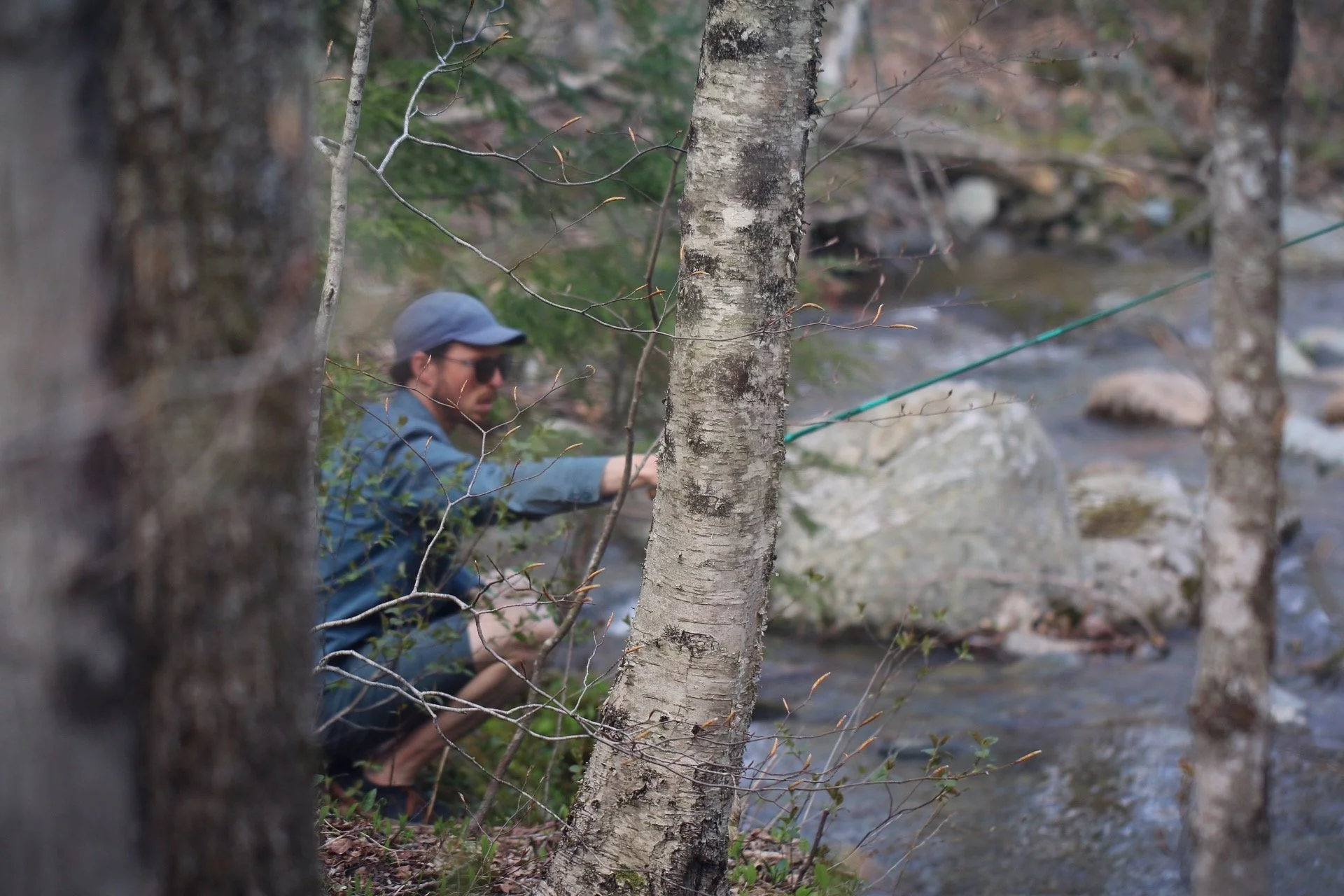Morels in the Ramp Patch
Renewed by Saturday morning coffee, I head for the foothills . . . ostensibly on a mission to gather ramp leaves for tomorrow’s guided foray and tasting event. I am traveling lightly, with just scissors, an empty bag, and water bottle in the front pocket of my knapsack. But a closer examination of the contents of my pack reveals ulterior motives. Tucked into the rear compartment, just in case the opportunity presents itself, is my telescoping tenkara fly rod, merely eighteen inches when collapsed.
If efficiency were the goal (which it certainly should be in light of my capacity and commitments), I would be driving straight to our proven ramp patch, a glorious green carpet in a ledgy upland forest. But the angling impulse overpowers me, and I find myself journeying to a remote mountain drainage, one known to hold trout but where the presence of wild leeks is speculative at best.
Ramps are exquisite and ephemeral, but brook trout have an intoxicating magnetism, a way of tugging on my heartstrings with surgical precision as they rise to take the floating fly. Time passes differently in the streambed, marked not by the clock or passage of the sun, but rather by the slippery and seductive flow of the current.
Soon, I have spent all of Saturday morning (and a good chunk of the afternoon) fishing, casting a caddis and following the brookie bite in a rambling reverie. Only when my stomach’s groans, which have been background noise for hours now, reach a rumbling crescendo, do I snap back to my senses and recall the botanical imperative of my outing.
It is too late now for ramp reconnaissance – I need to head straight home, perhaps scarf down a sandwich, and make a beeline to the heart of confirmed wild leek territory.
Ari in his element
Jenna greets me quizzically when I arrive back to our village ramp-less, full of fishy tales and mountain adrenaline. After all, she is the chef for Sunday’s tasting, and we have promised participants a sample of pungent spring greens to accompany the oyster mushrooms, morels, and baguette.
Eager to redeem myself, I refill my water bottle and am out the door again – this time with our younger daughter in tow. Noemi, now a bona fide big kid on the cusp of kindergarten, readily agrees to come along, motivated by (in ascending order) foraging, the promise of Papa time, the pursuit of amphibians, and the woodland bouldering opportunities that abound in the rocky ramp patch.
It is already late afternoon when we pull off on the side of a dirt road that abuts a quintessential Vermont hardwood forest, where rosy scarlet cup mushrooms intermingle with acres of wild leeks. I immediately offer a piggyback ride, hoping to avoid the absurdity of last week’s family foray at this very spot – when Noemi, intent on catching a frog, lost a boot to the deep muck within seconds of entering the woods.
Today my youthful picking partner is surprisingly cooperative, and with the robust ramps in peak form, soon we have selectively harvested enough leaves for our purposes. After a quick bouldering session, we jubilantly head downhill hand-in-hand, pausing only to admire a red-backed salamander that peaks out from beneath a log.
But of course, no adventure with a newly minted five-year-old is complete without an unexpected interlude, and this time it takes the form of Noemi dropping her water bottle down a perilous side slope. “Stay right here,” I proclaim, going into protector Papa mode. “I got this.”
I claw my way downhill to reclaim the careening baby blue canteen, which graciously comes to a stop at the base of a stately hardwood with distinctive, diamond-patterned bark and bare branches that have not yet leafed out like the surrounding canopy.
As I admire the mature ash tree, my hunter’s instincts – which have already shifted from trout to ramps today – now turn to the realm of fungi. And of course, there is only one gourmet mushroom that matters in May in the Northeast: the inimitable morel, ally of apple, ash, and elm. I glance upslope at Noemi, who seems to be coddling another salamander, and then I survey the loamy soil at the foot of the ash. If I’m going to find a morel today, this would be the spot.
Morels are notoriously unpredictable, but today they are true to the mid-May archetype: ash plus south-facing slope. A pristine yellow morel catches my eye, the perfect confluence of time, place, and quality of attention. I feel an undeniable sense of proximity, of connection, in these magical moments when my mind’s search image aligns with the Earth’s evanescent and concealed offering.
I scramble back up to Noemi, conveying the news in a joyful whisper. Together, we start checking every nearby ash tree, and manage to collect a dozen fresh yellows, some growing just inches from the leafy wild leeks. We have been returning to this ramp spot each May for over a decade, but only today, through sheer serendipity, did this father-daughter duo uncover its mycelial mysteries.

